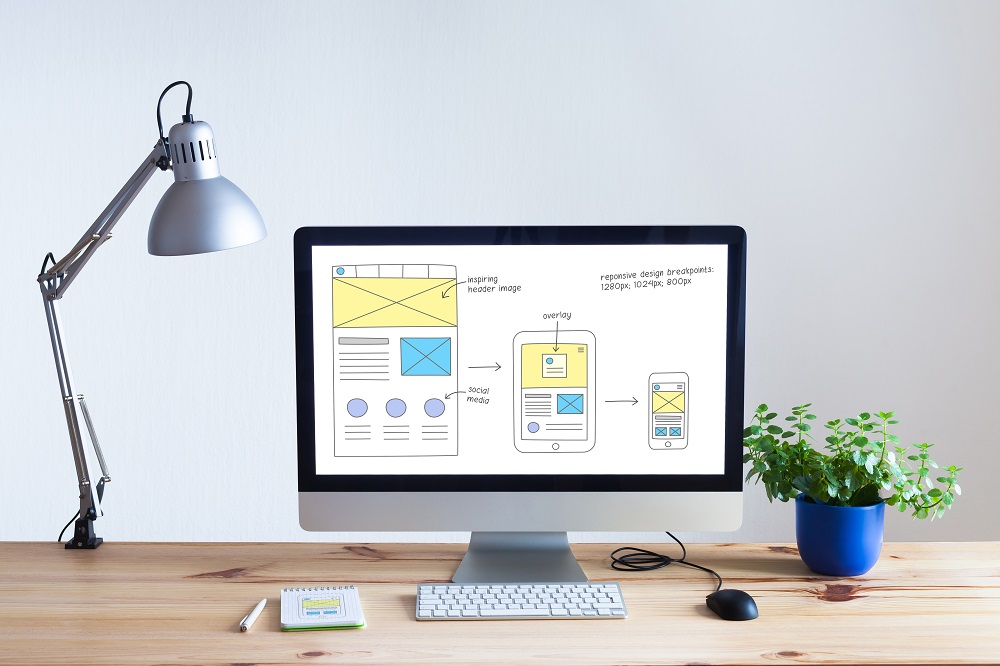The Principles Of Good Website Design
Before we dive into the principles and areas to consider when it comes to designing a website, it is first important to understand what good website design looks like and what the benefits of a well-designed website are.
User experience is and should be at the heart of everything you do - from imagery to content, keywords, call to action buttons and navigation. Your website is often one of the pinnacle touchpoints a potential customer will use when making a decision to buy from you or not, so making sure it offers a well-rounded experience is key.
Good website design is also captured in the way your website shows up on search results, directly linking to your SEO strategy and the way you implement SEO and Goole Core Web Vitals into your design. This means focussing on keywords, usability, the stability of your site, and factors such as load times.
And then we have the journey itself - starting anywhere from social media to email or Google search results, and moving onto and through your website, all the way to purchase or contact. Good website design considers all of this and creates a seamless transition from one stage of the journey to the next.
With that said, what are the principles for website designers to work to?
What Does Good Website Design Look Like?
First and foremost, understand who your target users and website visitors are, how they use your site, and what solutions they are looking for that your website can provide.
Your goal as a website designer should be to guide their journey in the most productive way, that isn’t challenging for them, and which leads them right to the solution that they are looking for.
Think About How Your Users Act Online
Online users are different from in-store users. Most of them don’t have much time and can’t be bothered to browse - therefore it is safe to assume that a high percentage will simply scan rather than read your copy in depth. As such, make those key phrases and calling points stand out.
Consider Quality
From the quality and stability of the images to the accuracy of the wording in terms of spelling and grammar, users are attracted to high-quality websites that show themselves to be well informed and well researched. Content is the most important part of your website - the goal of the design is simply to enhance that content and make it stand out in the most productive way possible.
Don’t Make Users Think
If, after landing on your website, your user still has questions about who you are and what you offer, then your website is not good enough to convert them. Users should be confronted with solutions from the homepage or landing page, with a clear structure and super simple CTA buttons to drive action.
Less Is More
… especially when it comes to actions. If your user has to do too much in order to access free content or get in touch with you, the likelihood that they will drop out of the process increases hugely. There is a reason why simple email forms are so much more successful than long-winded address and personal detail forms - because users want instant gratification and a quick result.
Focus Users’ Attention
Following on from the previous principles, the best thing you can do as a designer is use your skills to put a focal spotlight on the most important parts of any webpage - usually the problem you can solve, and the call to action you want users to take. Use colours, imagery, and even video to entice and capture attention, as well as words and phrases which are eye-catching - e.g., “FREE”.
Adjust Your Copy To Meet User Need
Writing copy for a website is all about being clear and concise - with as little fluff and filler text as possible. Users want to know WHAT you can offer, how much it is, WHY they need it, and HOW you intend to support them. The backstory about how you built the brand or business is interesting, but it doesn’t belong on your core web pages.
Think Like A User
So many designers shy away from blank space on a webpage, but in fact, this can make the page easier to digest and break up into smaller segments to read and take in. Use hierarchical structures to reduce complexity and present a clear status of importance in the content and leave gaps to make the content easier to scan.
Test, Test, Test Again
Our last principle is probably the most important - testing your site is key and needs to be done regularly and thoroughly to ensure that every button and every page on your site is active and supporting the overall customer or user journey. Not only does this let users know that your site is active and reliable, but it also supports your SEO and search engine ranking - making you easier for new users to find. This includes approaching your website from a variety of different first impression touchpoints and avenues!
For more advice on how to employ the best practice principles in building your website, or to get our support in building an effective and productive website for your brand, get in touch today.

